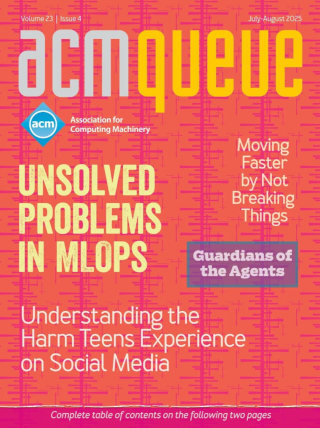
On Helicopters and Submarines:
SIP does a great job as a helicopter, but when you try to make it function as an IM submarine as well, disaster may follow.
Bernoulli vs. Archimedes - Whenever you see a movie that’s got a vehicle that’s part helicopter and part submarine, you know you’re in for a real treat. What could be cooler? One second, the hero’s being pursued by some fighter jets piloted by some nasty dudes with bad haircuts, dodging air-to-air missiles and exchanging witty repartee over the radio with a megalomaniac bent on world domination; and then, just as the hero is unable to evade the very last missile, he pushes a button, the craft dives into the ocean, and is surrounded by an oasis of peaceful blue.
A Conversation with Peter Ford:
The IM world according to a messenger architect
Instant messaging (IM) may represent our brave new world of communications, just as e-mail did a few short years ago. Many IM players are vying to establish the dominant standard in this new world, as well as introducing new applications to take advantage of all IM has to offer. Among them, hardly surprising, is Microsoft, which is moving toward the Session Initiation Protocol (SIP) as its protocol choice for IM.
Nine IM Accounts and Counting:
The key word with instant messaging today is interoperability.
Instant messaging has become nearly as ubiquitous as e-mail, in some cases far surpassing e-mail in popularity. But it has gone far beyond teenagers’ insular world to business, where it is becoming a useful communication tool. The problem, unlike e-mail, is that no common standard exists for IM, so users feel compelled to maintain multiple accounts, for example, AOL, Jabber, Yahoo, and MSN.
Sentient Data Access via a Diverse Society of Devices:
Today’s ubiquitous computing environment cannot benefit from the traditional understanding of a hierarchical file system.
It has been more than ten years since such "information appliances" as ATMs and grocery store UPC checkout counters were introduced. For the office environment, Mark Weiser began to articulate the notion of UbiComp and identified some of the salient features of the trends in 1991. Embedded computation is also becoming widespread. Microprocessors, for example, are finding themselves embedded into seemingly conventional pens that remember what they have written. Anti-lock brake systems in cars are controlled by fuzzy logic. And as a result of wireless computing, miniaturization, and new economies of scale, such technologies as PDAs, IM, and mobile access to the Internet are almost taken for granted.
IM, Not IP (Information Pollution):
A steady dose of realtime interruptions is toxic to anyone’s health.
Respected technology commentators say that they now prefer instant messaging (IM) over e-mail as their medium of choice for computer-mediated communication. The main reasons are that e-mail has become an overloaded channel for readers and that you can’t be sure to get a timely response from the recipients of your e-mail.
Uprooting Software Defects at the Source:
Source code analysis is an emerging technology in the software industry that allows critical source code defects to be detected before a program runs.
Although the concept of detecting programming errors at compile time is not new, the technology to build effective tools that can process millions of lines of code and report substantive defects with only a small amount of noise has long eluded the market. At the same time, a different type of solution is needed to combat current trends in the software industry that are steadily diminishing the effectiveness of conventional software testing and quality assurance.
Beyond Instant Messaging:
Platforms and standards for these services must anticipate and accommodate future developments.
The recent rise in popularity of IM (instant messaging) has driven the development of platforms and the emergence of standards to support IM. Especially as the use of IM has migrated from online socializing at home to business settings, there is a need to provide robust platforms with the interfaces that business customers use to integrate with other work applications. Yet, in the rush to develop a mature IM infrastructure, it is also important to recognize that IM features and uses are still evolving. For example, popular press stories1 have raised the concern that IM interactions may be too distracting in the workplace. This concern suggests that we still need to fine-tune the interface design for IM so the benefits of quick, lightweight communication can be gained without creating a distracting burden for users. How can the industry meet the demand for robust platforms and standards for IM without locking out innovation and development?
Broadcast Messaging: Messaging to the Masses:
This powerful form of communication has social implications as well as technical challenges.
We have instantaneous access to petabytes of stored data through Web searches. With respect to messaging, we have an unprecedented number of communication tools that provide both synchronous and asynchronous access to people. E-mail, message boards, newsgroups, IRC (Internet relay chat), and IM (instant messaging) are just a few examples. These tools are all particularly significant because they have become essential productivity entitlements. They have caused a fundamental shift in the way we communicate. Many readers can attest to feeling disconnected when a mail server goes down or when access to IM is unavailable. For some of us, network outages are now as inconvenient as a blackout.



